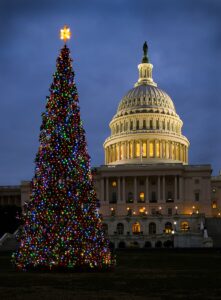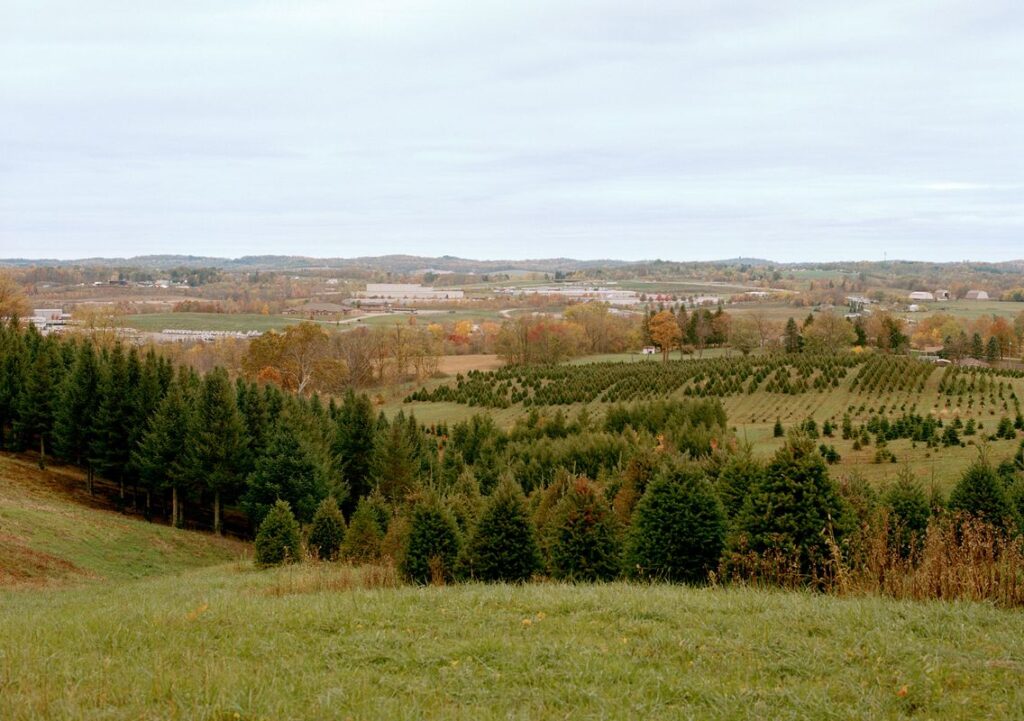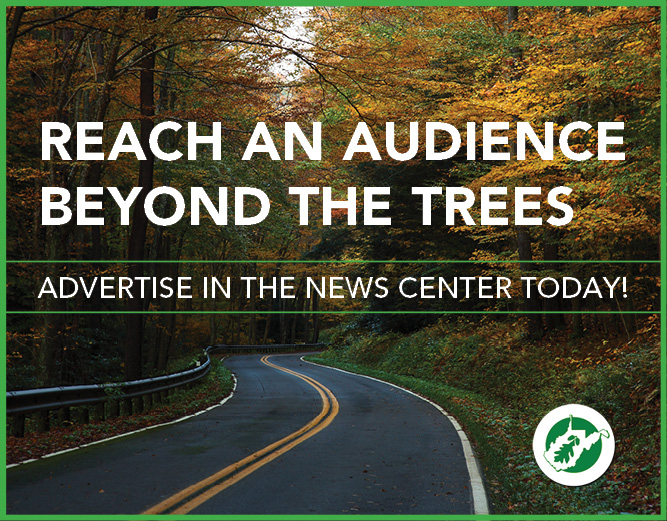West Virginia is covered by forests, mostly broadleaved trees that drop their leaves each fall. This year though, a couple of forestry-related issues involving evergreen trees emerged into the forefront of media attention, each of these connected with Christmas trees.
National Capitol Christmas Tree

From the woods of the Monongahela National Forest, forest managers selected a tree to feature as the “Peoples’ Tree” at the National Capitol this year. This year’s National Capitol Christmas tree will sit on the West Lawn of the U.S. Capitol over the holiday season.
Each year one of the national forests provides a tree for this honorable holiday decoration. This year marks the third time over the program’s 53-year history that the forest service chose a national Christmas tree from the Monongahela National Forest. The campaign that selects a National Capitol Christmas Tree from national forests began here in West Virginia with the first tree cut in 1970. Like the 2023 tree, the 1970 tree was a Norway spruce. During the 1976 U.S. Bicentennial year, MNF forest managers found an exceptional native red spruce, the second of three trees provided over the program’s history.
As part of the ceremonial ritual of harvesting and transporting the 63-foot-tall tree to Washington, D.C., organizers named the tree “wa’feem’tekwi” meaning “bright tree” commemorating the relationship of the MNF to that of the Shawnee Tribe. Many partnering organizations helped make this year’s effort a success. The West Virginia Society of American Foresters (SAF) worked with the National SAF to write some FAQs about the tree and a series of “Humans in Forestry” sketches featuring West Virginians working in forests and forest industry (https://www.uscapitolchristmastree.com/forestry-faqs/).
West Virginia native timber sports champion Arden Cogar and Ron Polgar, long-standing forest service biological technician on the MNF, cut through the trunk using a cross-cut saw, just like in the “old days.” Local efforts bringing in youths and adults alike also went into making 10,000 ornaments through an extensive public outreach coordinated by the USDA Forest Service and WVU Extension 4H; many of these will decorate the tree when it stands on the West Lawn in all its glory.
At first glance, using Norway spruce as a tree to represent West Virginia, might sound a little foreign. However, Norway spruce has had a long history of use in landscapes, conservation plantings, and was even part of one of the first tree plantations on private land in the state. The Rothkugel plantation on the MNF was originally on private timberland but has since been acquired by the MNF. This historic plantation can be visited close by the Bartow office of the Greenbrier Ranger District. There, you can still see many of the original Norway spruce and European larch trees planted there in 1907.
Christmas Trees are Good for You
On another note related to evergreens in West Virginia, research at West Virginia University has shown there is a difference between real Christmas trees and artificial ones. Researchers at the WVU Division of Forestry and Natural Resources set up a study to compare whether real Christmas trees help shoppers recover from mental fatigue when compared to artificial indoor tree displays.
To do this the WVU researchers developed a questionnaire and contracted a professional survey team to collect 1,208 online surveys nationwide. In the questionnaire, there were 45 questions and two video evaluations showing different Christmas tree shopping environments (indoor stores vs. outdoor farms, box stores, garden center, etc.).
After the surveys were completed and the data analyzed, one key finding was that real trees sold outdoors have a higher perceived restorative quality. That is, people watching the videos of real trees sold outside had less mental fatigue than when they were watching videos of artificial trees sold indoors. This research is currently in a scientific publication review process, so we look forward to understanding more about the benefits of real trees as review comments return and future research continues to clarify these ideas.
So, despite the abundance of broadleaved trees that always seem to make the news—especially for their colorful scenic beauty—this past year had some remarkable new highlight from West Virginia forests and forest industry that captured the attention of the media and the interest of Christmas tree enthusiasts around the nation.

















